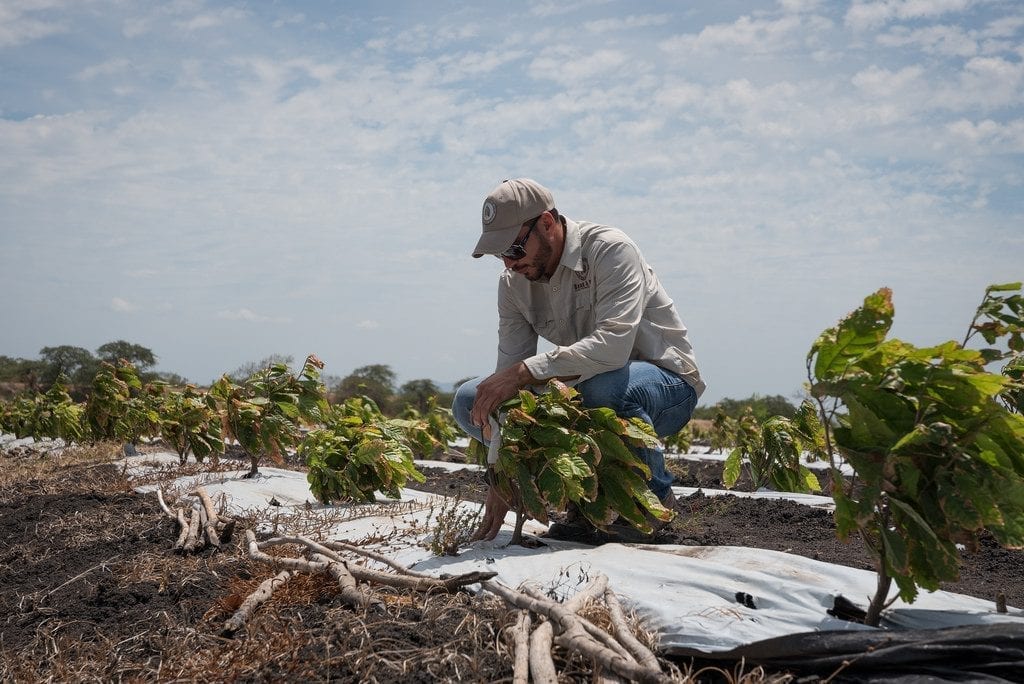Nicaragua Chosen by US-Israel Company for Huge Cacao Plantation
Bean & Co. to invest US $60 million to grow 3,000 hectares (7,413 acres) of cacao in Tipitapa
The project for cultivation with drip irrigation hopes to export some 7,500 tons annually beginning in the seventh year of operations.
By Ivan Olivares (Confidencial)

HAVANA TIMES – The Israeli-U.S. company Bean & Co., that intends to plant 40,000 hectares (98,842 acres) of cacao all over the world, has chosen Nicaragua as one of the 18 countries where it will bring this vision to reality.
“We are seeking land in America and Africa”, with an eye to proximity to the large markets in the US and Europe, explained Ecuadorian Gino Zambrano, the project’s agricultural director. The company plans to cultivate 3,000 hectares (7,413 acres), in the Pacific region of Nicaragua, specifically in the area around the municipalities of Tipitapa and Malacatoya.
The project is projected to be the largest cacao plantation (and possibly of any crop) in the country. The young plants will be helped along by the technique known as “fertigation,” which incorporates the fertilizers into the water dripped directly onto the roots of each plant.
After evaluating each proposal, the executives from Bean & Company selected Nicaragua from among many other countries. The process of selection wasn’t simple, as is normally the case in this type of search.
Nicaragua was included in a preselection of countries possessing sufficient extensions of land, plus the appropriate soil and climate conditions. From this preliminary list, they began narrowing down the list for various reasons, until Nicaragua was finally chosen.
Zambrano explained that following several visits over a three-year period, they decided on Nicaragua, not only in view of its level of citizen security compared with some other countries in Central America, but also due to other characteristics that would support the project’s development.
These included the availability of an experienced agricultural labor force; the existence of a business climate centered on the commercialization of products such as fertilizers, herbicides and others; and enough accessible water to irrigate 3,000 hectares of land.
The process included visits to the country’s Caribbean Coast, which was eventually eliminated because the excessive humidity brought the threat of an undesirable enemy – fungus. They also looked at Chinandega to the northwest, but this was eventually excluded for the high price of land, and also because they doubted they could find the required 3,000-hectare extension.
In the end, project executives acquired the land in the area surrounding the Tipitapa River whose extensive savannahs extend outwards in all directions. On very clear days, the Concepcion volcano on Ometepe, over 60 miles away, can be seen from here in one direction, and the Momotombo volcano in Leon, 35 miles distant, in another.
The lands selected, used throughout the last century to cultivate cotton and rice and as pasture for cattle, proved useful because they’re largely flat (even though they had to construct raised beds for drainage) with a soil composition that is 70% clay.
Key to all this was the support of PRONicaragua, the official investment and export promotion agency of Nicaragua, headed by Laureano Ortega, son of President Daniel Ortega. According to the project director, Laureano was “attentive to our needs and helped us fulfill the requirements to produce here,” including accompaniment and assistance navigating the requirements of the official institutions, explained the project director.
Israeli technology
The process began in August 2016 with the purchase of land and the adaption of structures to create offices, workshops, warehouses and other things; construction of wells and drainage installations; elaboration of raised beds and ditches; installation of electrical poles and cables, etc. with an investment estimated at US $60 million.
The result is an initial lot of 500 hectares ready for planting, of which half now sport plants that are 40 centimeters tall (just under 16 inches). These young plants all receive protection from the elements, as well as the necessary amount of water, applied via an Israeli technique of micro-localization via drip irrigation.
The technique involves an irrigation pipe with perforations every 50 centimeters (19.7 inches) which at regular intervals releases a drop of water with fertilizers directly onto the plant’s roots. This process feeds and also moistens the plants without wasting resources, including the electricity needed to pump the water.
Zambrano commented on the irony that the company finds it cheaper to import the perforated tube directly from Israel than to buy it from the local businesses, leaving them no alternative but to do so.
At this moment, the company employs between 120 and 150 people, a number that could rise to 250 in the next 2 – 3 years when they reach their goal of 3,000 hectares in cultivation. The commercialization of the product is aimed mostly at the US and Europe, plus a small market in Japan, without discounting the possibility that China could become a large consumer of chocolate over the next five years.
In terms of genetics, Zambrano explained that they’re importing highly productive clones. They’re also thinking about the importance of good post-harvest processing of the cacao seeds, noting that only a good fermentation process produces a cacao that brings a high price from chocolate manufacturers.
All of the work invested has the goal of producing 2.5 tons of cacao per hectare. Given that each plant requires from 2 ½ to 3 years to produce, they hope to export the first hundred tons in 2020, and from there increase production year by year until they surpass 7,500 tons in the 7th year of operation. With a price that currently runs around US $2,500 a ton, you can do the math yourself.

just for the sake of making lot of money and buying land from a country
what a greedy mentality
especially to deal with chinese
im not sure of the quality when its about hybrid
I’m guessing that the plantation will certainly NOT be in the path of China’s proposed canal?